Traditional Cornish Pasty
Traditional Cornish Pasty, savory packages of beef and potatoes wrapped in flaky, buttery pastry. This British classic makes a wonderful lunch or dinner on a chilly day. You may (or may not) have heard of the Cornish pasty (sometimes spelled pastie, pronounced pass-tee, not paste-y).
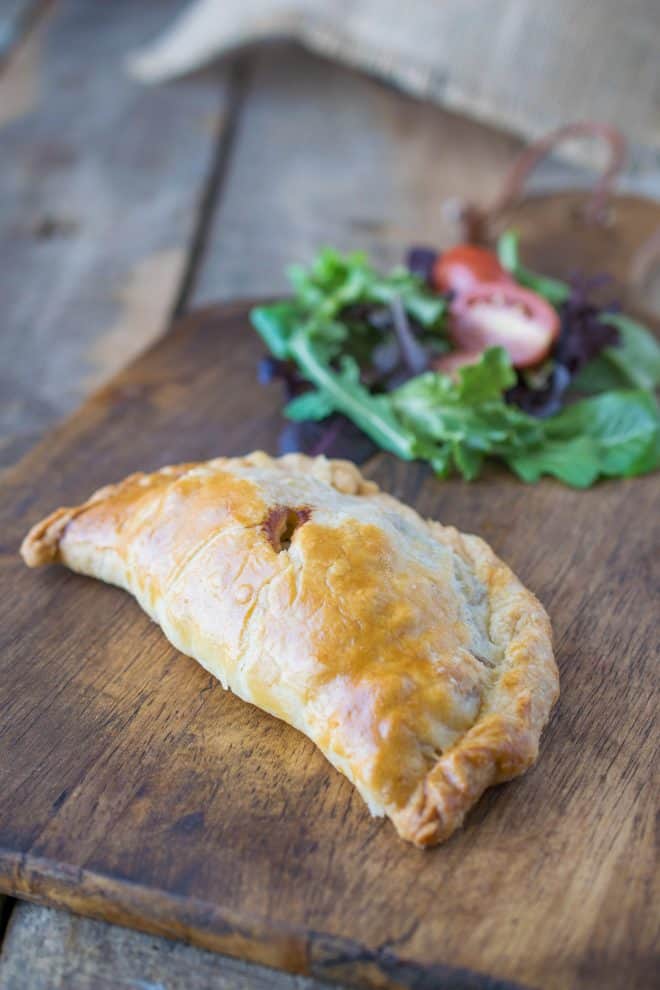
Along the pasty is the Sausage Roll is Britain’s favorite on-the-go meal and one of England’s national treasures.
Bakeries are all over England and that makes it convenient to go in and pick-up a fresh pasty for lunch, the most popular being the Cornish pasty. Other varieties include cheese and onion and minced beef, but whatever the filling, they’re always savory, never sweet.
The Cornish pasty is a complete meal in itself that is a mix of beef and vegetables that are incased in a flaky pastry that is then baked.
The History of Cornish Pasty
A popular quick meal since the 13th Century, this pasty originated in Cornwall which is on the very tip of the south west of England. If you’re from Cornwall, you’re considered Cornish. It’s simply homemade pastry filled with beef, swede (rutabaga) and onion. It later evolved into food for miners as it was stable enough to be dropped to the workers in the mines.
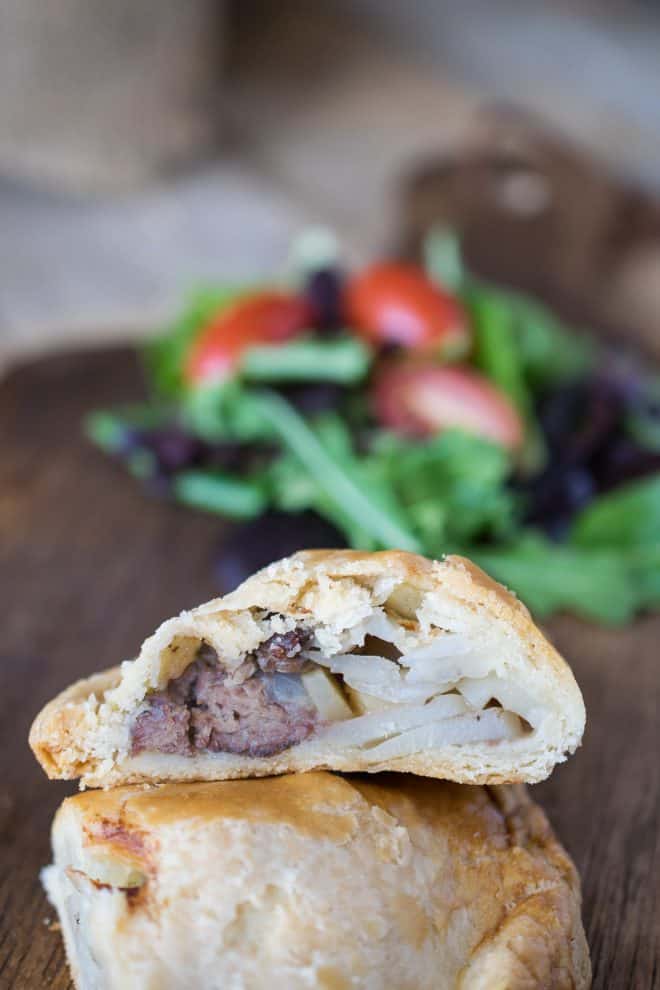
Cornish Pasty Variations
There are many variations to the Cornish pasty, like the shape and filling, but these are not correct. For the pasty to be authentically Cornish there are some rules. After all, it represents the county of Cornwall in the South of England and it has to be right.
Cornish Pasty Pastry
The pastry should be shortcrust pastry (like pie crust, unsweetened). Chopped skirt steak, onion, rutabaga (swede if you’re in the UK), potato, salt, pepper and a little butter are the proper filling.
A circle of pastry is rolled out and the filling must be placed in the pastry uncooked, to allow it to cook slowly and develop the flavors.
The way the pastry is sealed also has to be right. The edge has to crimped in a way that looks like a braid, basically rolling the pastry edge on itself to create the characteristic look.
The sealed edge is not to be on the top of the pasty, but on the side. If it doesn’t have this crimp, it’s not Cornish. In addition, if the pasty is not ‘D’ shaped it is also not Cornish.

I like to serve the pasty with a simple side salad. Since the filling contains all the makings of a meal, a heavy side is really not needed, but a nice pint of ale will certainly finish the meal nicely!
Freezing Cornish Pasty
You can make them and freeze before baking, just defrost before baking to ensure the meat comes to a safe temperature.
If you’ve tried this Traditional Cornish Pasty recipe or any other recipe on the blog then don’t forget to rate the recipe and let me know how it turned out in the comments below. I love to hear from my readers!
You can also FOLLOW ME on FACEBOOK, TWITTER, INSTAGRAM and PINTEREST to see daily recipe updates.
Traditional Cornish Pasty
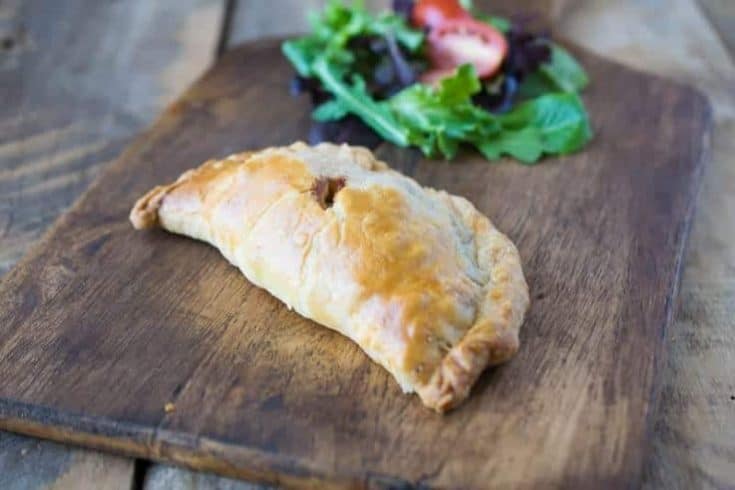
Traditional Cornish Pasty are savory packages of beef and potatoes wrapped in flaky, buttery pastry. It makes a wonderful lunch or dinner on a chilly day.
Ingredients
- For the pastry:
- 3 cups (450 grams) all-purpose flour
- 2 sticks/1 cup (226 grams) unsalted butter, cubed and kept cold until ready to use
- Small pinch of salt
- 1/2 cup (118 ml) cold water
- 1 large egg, beaten with 1 teaspoon milk
- For the filling:
- 6 ounces (170 grams) russet potato, peeled and chopped into bite-size pieces
- 6 ounces (170 grams) swede (rutabaga), peeled and chopped into bite-size pieces
- 1/2 small onion , finely chopped
- 1 pound (453 grams) skirt steak, cut against the grain into bite-size pieces
- 2 1/2 tablespoons unsalted butter
- 1 teaspoon salt
- 1/2 teaspoon ground black pepper
Instructions
- To make the pastry in a food processor: Add the flour, butter and salt. Pulse until you get the texture of fine breadcrumbs. With the processor running, slowly drizzle in the cold water until it forms a ball.
- To make the pastry by hand: Add the flour, salt and butter to a large bowl. Using your fingertips (or a pastry cutter) rub the butter and flour until it resembles breadcrumbs. Drizzle in the water and mix using a fork until the it starts to come together and holds together when pressed in your hand.. You may not need all of the water.
- Turn the dough onto a floured surface and shape into a flat ball. Wrap in plastic wrap and refrigerate 10-15 minutes.
- Preheat oven to 360°F/182°C.
- Whisk the egg with the milk.
- Take 4 ounces pastry and roll into an 8 inch circle. Place a small handful of potatoes, rutabaga, onion, and beef in the center of the pastry, leaving 2-inch border. Sprinkle with a small amount of salt pepper and flour. Place a little piece of butter on the top.
- Brush half of the edge of the pastry with egg mix then fold the pastry in half and seal the edge. Twist the edge to create a good seal. Cut a slit in the top of the pasties (to let steam out while baking) and place onto a parchment lined baking sheet.
- Brush all the pasties with the rest of the egg/milk and bake for 45 minutes until golden brown.
Nutrition Information
Yield
8Serving Size
1Amount Per Serving Calories 328Total Fat 17gSaturated Fat 10gTrans Fat 0gUnsaturated Fat 5gCholesterol 65mgSodium 385mgCarbohydrates 38gNet Carbohydrates 0gFiber 2gSugar 0gSugar Alcohols 0gProtein 7g
This nutrition calculation is provided by Nutronix that is only a guideline and not intended for any particular diet.
This Traditional Cornish pasty recipe first appeared on Food Fanatic where I am a contributor.
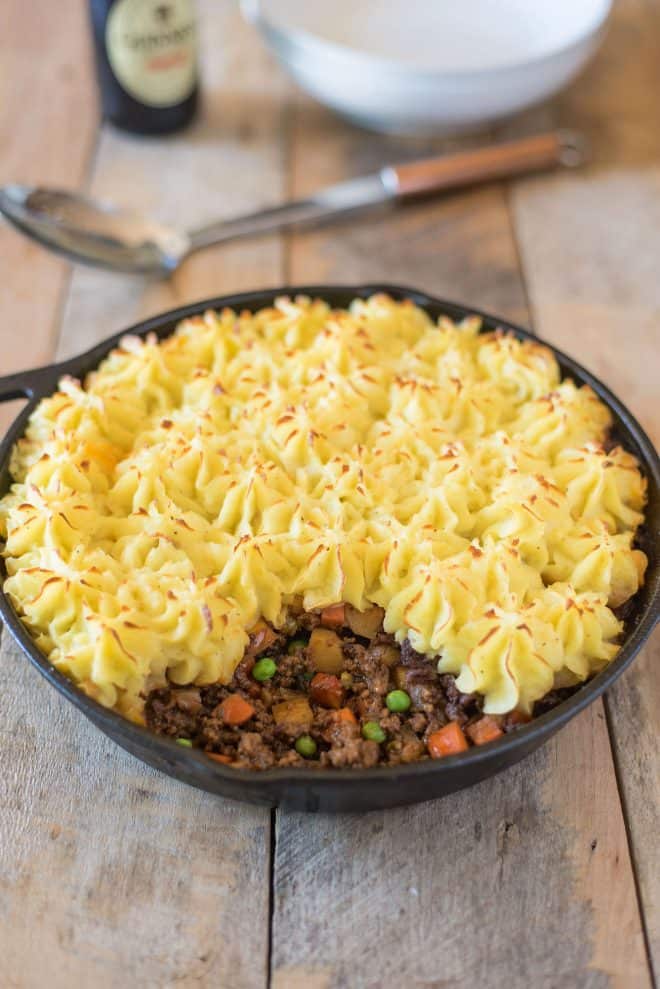
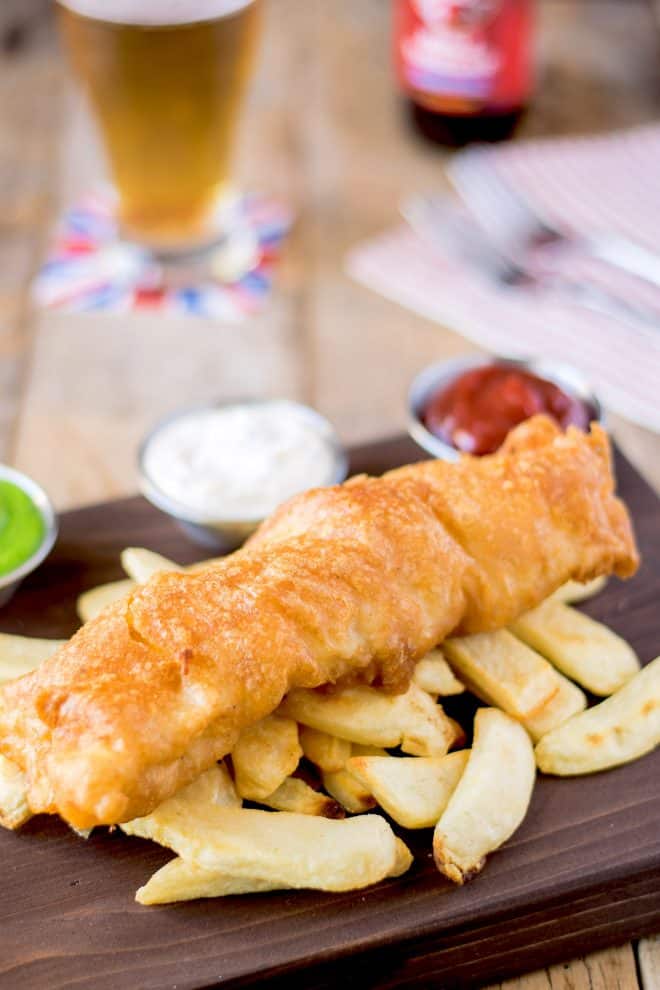
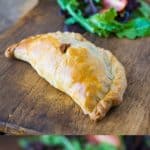


24 Comments on “Traditional Cornish Pasty”
Can you freeze these before baking them and, if so, can you bake them from frozen?
You can freeze them before baking, but I would defrost in the fridge overnight to make sure that the meat comes to a safe temperature. I hope this helps and enjoy.
My Grandmother’s ancestors were from Cornwall, they migrated to the UP of Michigan. M Grandfather’s family were German immigrants that worked for the mines in the UP. I was raised on Pasty’s, and have been part of Pasty making all my life, to me it us part of my heritage. I don’t have a daughter, but my two sons both know how to make them also, and they help their ol mom make them.
Oh this is lovely. Thank you for sharing.
Grazie per tutte le tue ricette. io sono nata in Inghilterra da genitori italiani sono in Italia da circa 45 anni mi manca la cucina inglese e cerco di fare spesso alcune delle tue ricette grazie ancora
Thank you for your message. I don’t speak Italian so I had to use a translator and I really appreciate the support, let me know if you have any questions.
My granny made the best pasties when I was growing up . She came from Redruth , Cornwall and emigrated to Canada in 1924 to marry my granddad who had come across the pond to work in the gold mines in Northern Ontario with his three brothers .She always put our initial on our pasty with a bit of the pastry and I do the same when making them .
Thank you for sharing your story of your granny. That is so lovely she would add your initial to the pasty, grannies are the best.
Cornish miners traveled all over the world to escape the potato famine, including gold mining towns in the Sierra Nevada mountains like Grass Valley, California. That’s how I grew up eating these and can buy them in several small stores in town. They’re delicious!
I did not know this, thank you for sharing.
Hi. Yes, like my fellow American above, the Cornish miners came all over USA, including Michigan, where I grew up and have come to know and love them! I’ve been making them for so many years I can make in my sleep! LOL.. pretty much the same recipe and technique as yours, but all ever found here is using ground (mince) beef.. I am excited about trying my next mission using the skirt steak!
I thought it was very interesting to see pasties also here in the U.S when I arrived many years ago. Thank you for sharing.
It looks great and I’ll bet the flavor is delicious. I’m just wondering if the toughness of skirt steak detracts?
Thank you for your question. It is true that skirt steak can be a tough cut of meat, but it does have the best beef flavor and is the cut of beef they traditionally used back in the 1500’s when the recipe was invented. To overcome this, I find that cutting the steak against the grain and into bite-size pieces, along with the short cooking time helps with this. Let me know if you have anymore questions.
Thank you for posting this! However are the potatoes and meat cooked prior to putting them into the pastry?
No, everything goes into the pastry uncooked. The filling cooks in the oven, I mention this is the body of the post. Thank you for your question Margaret.
I’ve never had a cornish pastry, but I LOVE anything savory that’s wrapped in flaky pastry! I sure could use some awesome comfort food like this on this wet and gray day!
I love little pockets like these. I’d fill mine with veggies! These are perfect little pockets to have for dinner especially with kids!
Thank you for sharing this authentic recipe. We love Cornish Pasty that’s available at the Cornish Pasty Stores In London.. I would love to add a vegetarian twist to this recipe and make mine.
Thank you Sandya, that would be delicious. Cheese and onion pasties are also very popular in England.
These look a lot like empanadas! I’ve never tried a cornish pasty.. I’m sure the husband could eat a whole plate of these lol
These look fabulous! I’ve been to London twice, but somehow never got my hands on one of these delights! Guess I’ll just HAVE to go back again! ?
Although some bakeries in London will have these they are truly a regional dish. The genuine Cornish Pasty has to be bought in Cornwall or very close to it. They were originally made for tin miners in Cornwall.
Thank you for sharing this info on the pasties, this is very interesting and educational.